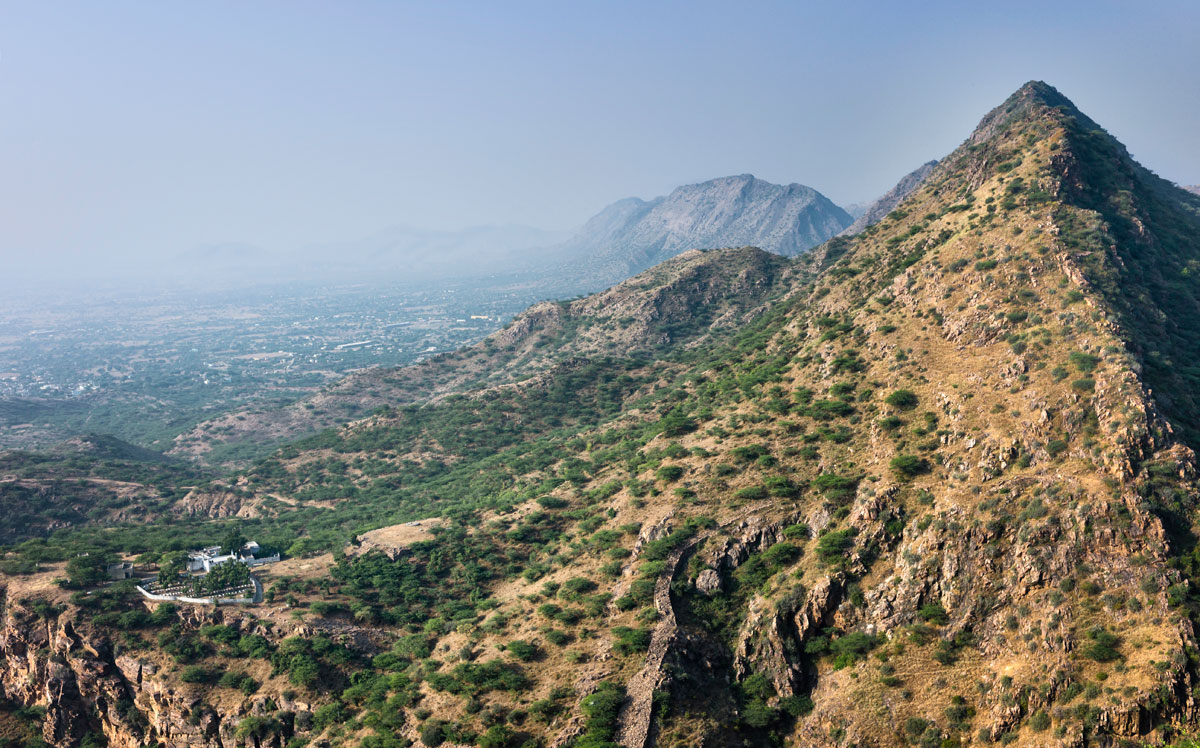aravalli. Terms are the windows to social, historical, geographical and cultural perspective of a nation, the removal of which hampers people ideologically.

Source: Aravalli Hills – Bing images
New Delhi: The National Capital Region Planning Board (NCRPB) was established in 1985 with the aim to prepare plans with respect to the infrastructure of the National Capital Territory of Delhi along with other states that are in concurrence with it to avoid haphazard development.
Recently, the NPCRB in its Draft Regional Plan of 2041 has replaced the term “Aravali” with the term “Hills and Mountains.”
The Aravali Ranges:
The Aravali Range is located in the north-western part of India. It stretches from Gujarat to Delhi. The Aravallis have been categorised by geologists as one of the oldest fold mountain systems in the world and as a residual mountain system, due to the process of perpetual weathering.
The Aravali Ranges once formed the natural boundary of the NCR-region and are of extreme significance for the climatology of India as they narrow down the expansion of desertification in the eastern regions of Rajasthan. Moreover, it acts as a natural barrier against dust storms and is responsible for an adequate amount of precipitation in the region.
The ranges also form the point of origination for rivers like Luni and Sabarmati providing life and germination to flora and fauna in the region. They act as shock absorbers against the growing urbanisation and desert in the west, with their marginally shrinking forests.
The significance of the Aravallis for the environment is much more than just a mountain or hill as the NCRPB wants us to believe and the modification of the Draft for 2041 is but only an indication as to how they mean to approach the problem of diminishing mountains.
Environmental Concerns and Much More about Aravalli:
The Aravallis have time and again been in news due to incessant infrastructural development, massive exploitation of natural resources, activities such as quarrying and mining and destruction of fragile forest ecosystems. This has further degraded the groundwater resources and increased levels of pollution.
The Aravali ranges face extreme pressure due to man’s ever-present needs and the changing climate which has resulted in the loss of critical habitats rendering the conservation measures ineffective. In recent years registering an increase in events of human-wildlife conflict has also been rampant.
This certainly has thrown upon many questions, the dichotomy of development and conservation, oft-repeated, but yet insufficient to awaken the mass-perils of climate change and its effects in these regions, that housed the cradles of the earliest Indian civilization.

Source: aravallis images
The NPCRB and the Draft of 2041:
“People have always spoken about Aravallis and suddenly 20 years down the line, nobody knows the term because it doesn’t get used, it doesn’t get talked about. So, they wouldn’t know what it is, and thus it can be removed to make multistorey apartments, an airport or another flyover.” said Veena Padmanabhan, a campaigner of the Aravalli Bachao Movement.
Some activists have been working towards safeguarding whatever is left of the Aravallis due to their enormous impact but the government seems to have turned a blind eye in the name of infrastructural development. Such lopsided development at the cost of the environment will lead to our deaths in the near future but the NPCRB does not seem bothered.
Another campaigner said, “I strongly recommend that NCRPB reconsider the removal of the term ‘conservation’. Because the moment we remove the term conservation, what does it mean? We are confusing all the work that has been done over the years. People would be confused about whether it’s a natural zone or a natural conservation zone. And conservation is the key to the survival of Aravali.”
If the Aravallis go, the entire NCR region would become unlivable. So, all the politicians who are plotting to destroy Aravalis for their immediate economic purposes, whether to suit themselves or to suit their friends or a particular lobby, are toying with the future.
The forests, especially in Haryana, are home to numerous flora and fauna and are rich in biodiversity. About 400 species of trees, 200 species of birds, 20 species of mammals, and 100 species of butterflies are residing in the forests of the Aravallis. They all stand endangered if this draft plan is put into implementation.
People of these states, who are aware of the importance, are fighting against the government to safeguard their habitat through programmes such as the Bring Back Aravalli Campaign and the Aravalli Bachao Movement. The government must notice and acknowledge as well as find a way to safeguard the environment rather than cut through it.













